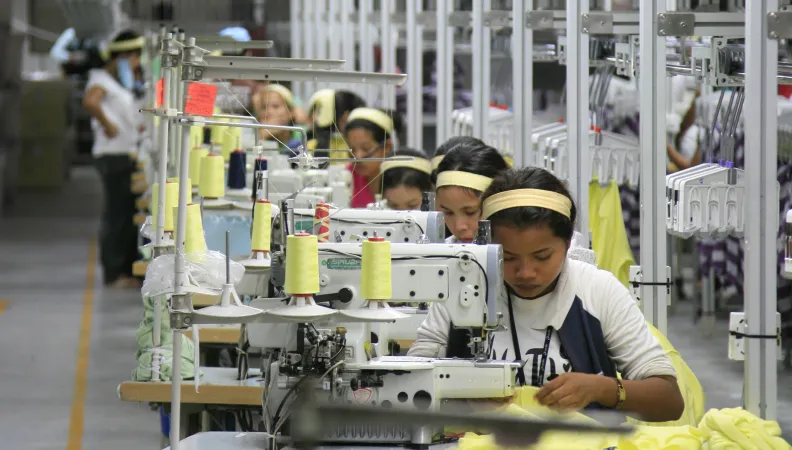Share the page
Train Cambodians for management jobs in the textile sector
Project


-
Project start date
-
Status
Ongoing
-
Project duration
-
15 ans
-
AFD financing amount
-
US$ 3260000
-
Country and region
-
Location
-
Phnom Penh
-
Type of financing
-
Beneficiaries
-
Association of Cambodia’s Textile and Clothing Industry (GMAC)
The textile sector is essential to Cambodia’s economy and employment. The middle management and directorial positions are held by Asian expatriates because of the lack of sufficiently qualified local people. This project has enabled the creation of a training centre for the textile professions, allowing Cambodians to access these positions.
Context
The textile clothing sector is one of the pillars of Cambodia’s economy, generating more than 91% of exports, accounting for 26% of gross domestic product (GDP) and employing 700,000 people in October 2017. However, it currently relies on the low cost of workers’ wages, the workforce being lowly qualified and predominantly female. Most of the employees are young women between 18 and 25 years old without initial qualifications.
Description
The creation of the Cambodian Garment Training Institute (CGTI) involves the construction and setting up of an academy and provision of the necessary equipment for the centre in the future, as well as a dormitory for students. Each year, the CGTI should allow 240 young professionals to receive initial training and 1,600 employees in the sector to enhance their skills through continuous training. This training centre is accredited by the Ministry of Labour and Vocational Training. It is a private training institution, the value and quality of whose diplomas are recognised by the national authorities. The project is supported by the Cambodia Textile and Apparel Industry Association (GMAC), a non-profit professional group that represents the sector and has more than 650 members and clothing companies.
Impacts
Enhancing the skills of the factory workforce should lead to a significant increase in productivity, as well as raising the education and qualification levels of current and future employees, offering them new job opportunities, a higher salary and more responsibility. This training centre is the first in Southeast Asia. It is likely to initiate broader reflection on the possible link between public and private sectors in the education and training systems.


